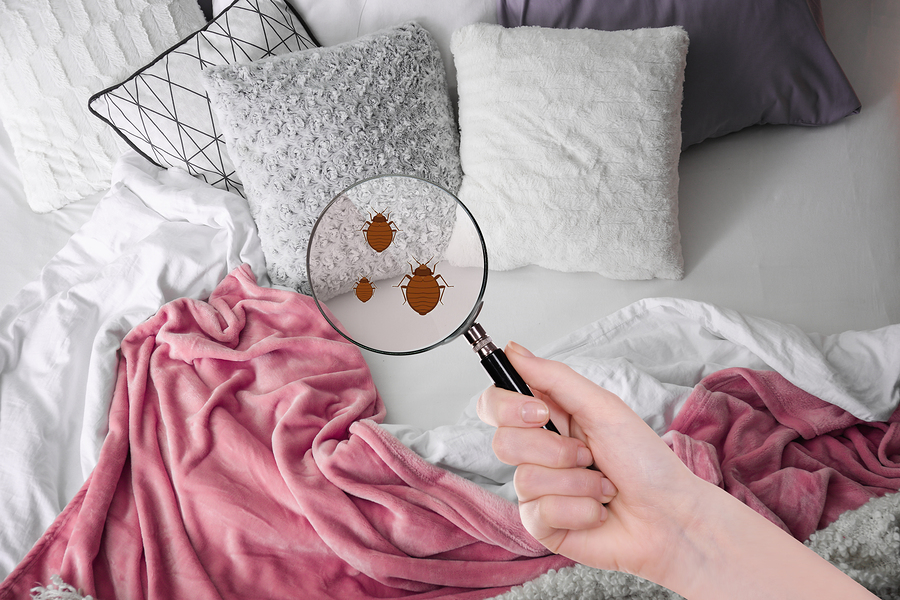What are the signs of bed bugs?
- Details
 Despite a bed bug’s small stature, only growing to 4 to 7 mm long when mature - it’s very possible to see bed bugs with the naked eye. It’s also even more likely that you will see evidence of their activity in an area of infestation.
Despite a bed bug’s small stature, only growing to 4 to 7 mm long when mature - it’s very possible to see bed bugs with the naked eye. It’s also even more likely that you will see evidence of their activity in an area of infestation.
Since these pests can hide in luggage, clothing or other personal items, it can be very difficult to completely avoid them until it’s too late. Their presence is quickly felt once they bite, leaving itchy, unsightly marks.
Traveling and sleeping in beds where many other people have slept is the most common way to have contact with bed bugs. They can also be spread via secondhand furniture and mattresses. Their flattened bodies make it possible for them to fit into tiny spaces, about the width of a credit card. Bed bugs do not have nests like ants or bees but tend to live in groups, hiding in small places. Your best line of defense is to know what to look for, how to identify them, and how to avoid encountering them.
Obvious signs of a bed bug infestation
If you wake up with itchy areas on your body that you didn't have when you went to sleep, you may have been in contact with an area infested by bed bugs. This especially applies if you’ve stayed in a hotel or slept in someone else’s bed around the time the bites started. Other signs that you have bed bugs or are in an infested area include:
- Bloodstains on your sheets or pillowcases
- Dark or rusty spots of bed bug excrement on sheets and mattresses, bedclothes, and walls
- Bed bug fecal spots, eggshells, or shed skins in areas where bed bugs hide
- An offensive, musty odor which excretes from the scent glands
When you stay at a hotel or at someone’s house in a guest room, it's a good habit to conduct a quick check for signs of bed bugs. Closely examine the folds and seams in the corner of the mattress for signs of activity. Use a credit card to slide into areas to get underneath the folds of the mattress, where bed bugs love to hide, and closely examine the darker hiding spots with a flashlight. Look for signs such as dark spots about the size of an asterisk (which are feces), and tiny pale yellow skins that nymphs shed as they grow.
When not feeding, bed bugs hide in a variety of unlikely places, especially if the room is heavily infested. You may find bed bugs in the seams of chairs and couches, between cushions, in the folds of curtains, and in drawer joints. They have been known to congregate around electrical receptacles and appliances, as well as the junction where the wall and ceiling meet.
Unfortunately it’s not uncommon that they’ve already infested your belongings and bitten you by the time you notice there’s a problem. It is then that they can travel back home with you. If infested, your home may require professional treatment for extermination to be successful. Therefore it’s important to know what to look for and avoid areas that are questionable. If you suspect you have a bed bug infestation or any other type of insect infestation contact the professionals at Eagle Pest Services to schedule an inspection.





